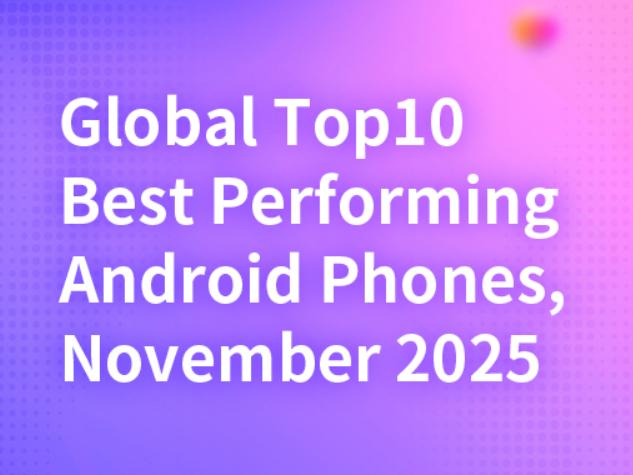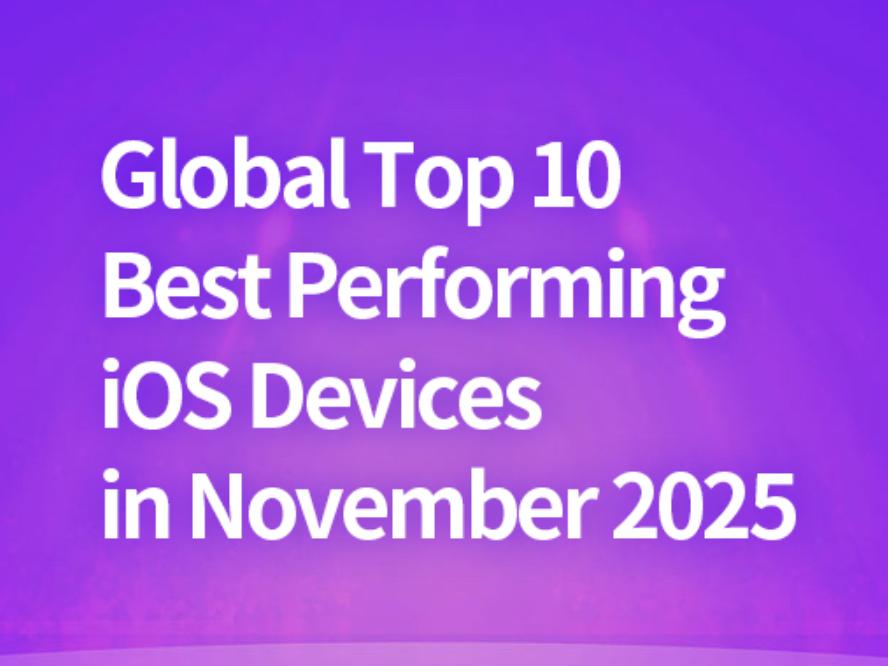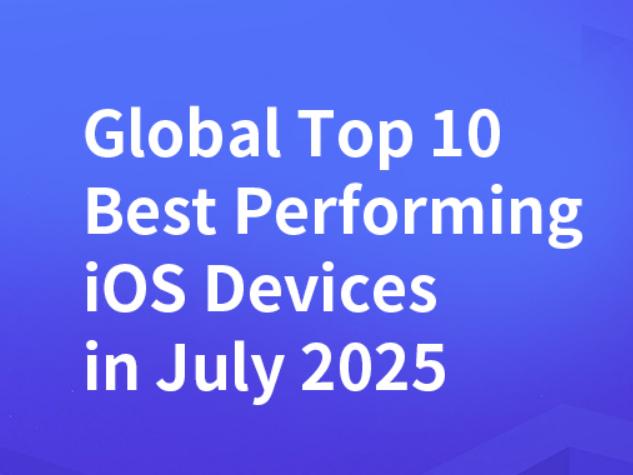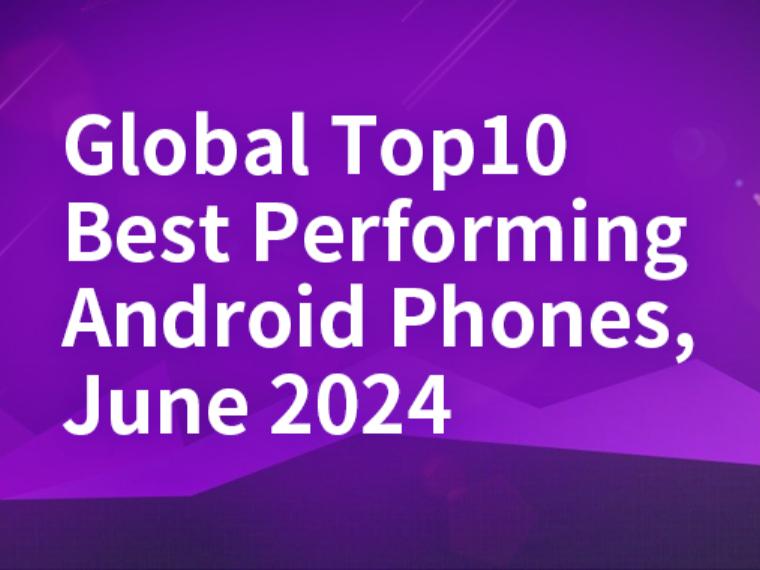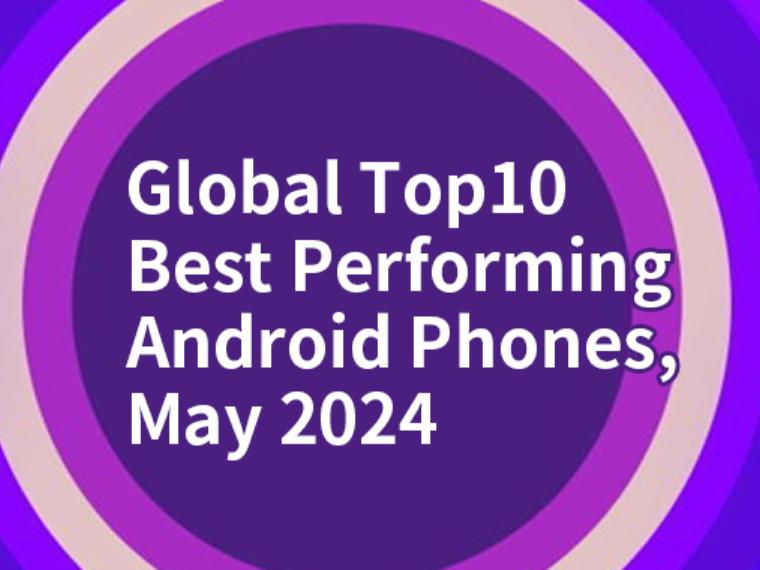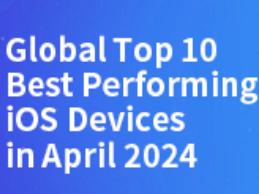Antutu Report on Global Mobile Phone Users’Preferences, Q1 2020
The first quarter of 2020 has ended, andApril has come. The first 3 months of 2020 have seen significant changes in theglobal mobile phone market due to the coronavirus pandemic. Although 5Gnetworks and 5G phones are becoming more and more common, the pandemic has heldback people’s enthusiasm for switching phones and forced them to stay at home.
So what has changed in the global mobilephone market in such a situation? Next let's take a look at the preferences ofglobal mobile phone users in Q1 2020.
It should be noted that this preferenceslist is prepared based on the phone configuration of the users of Antutu andthus it does not represent the preferences of the overall Android market.
Screen Size
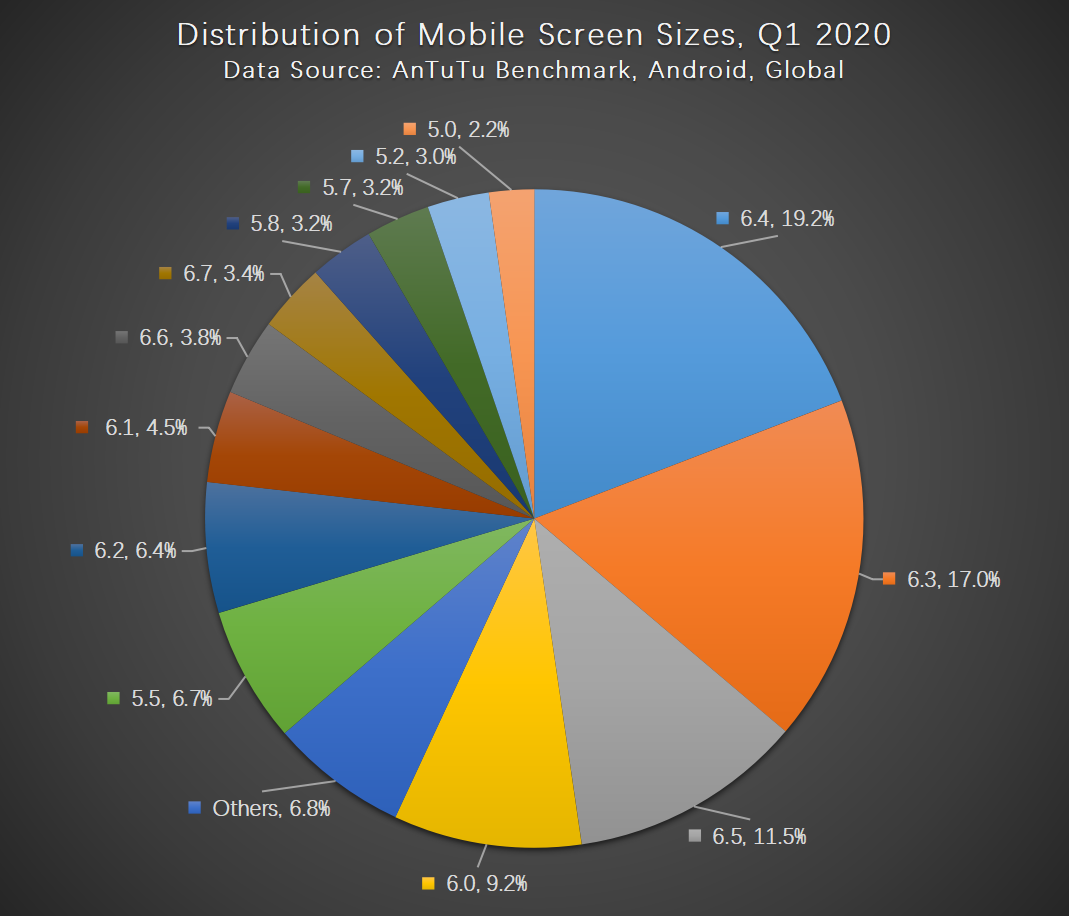
From the distribution chart, we can seethat phones with the screen sizes of 6.4, 6.3 and 6.5 inches together accountedfor 47.7%, almost half of all the devices. It can be seen that large screen ofover 6-inch has become mainstream, and on this basis, it's up to the users todecide what screen size they can accept.
The reason for this phenomenon, on the onehand, is because of market supply chain. The production of 6-inch screen mayhave been stopped. Second, it is “forced” by mobile phone manufacturers thatthey don’t release mobile phones of small screen. As a natural consequence, theproportion is becoming smaller. This is also the natural development trend ofmobile phones.
The rest like some exceptionally large screensizes such as 6.7 inches and 6.8 inches also take up a significant proportion.it can be seen that as the screen-to-body ratio of mobile phones is gettinghigher and higher, the screen size that people can accept is also gettingbigger and bigger.
Screen Resolution
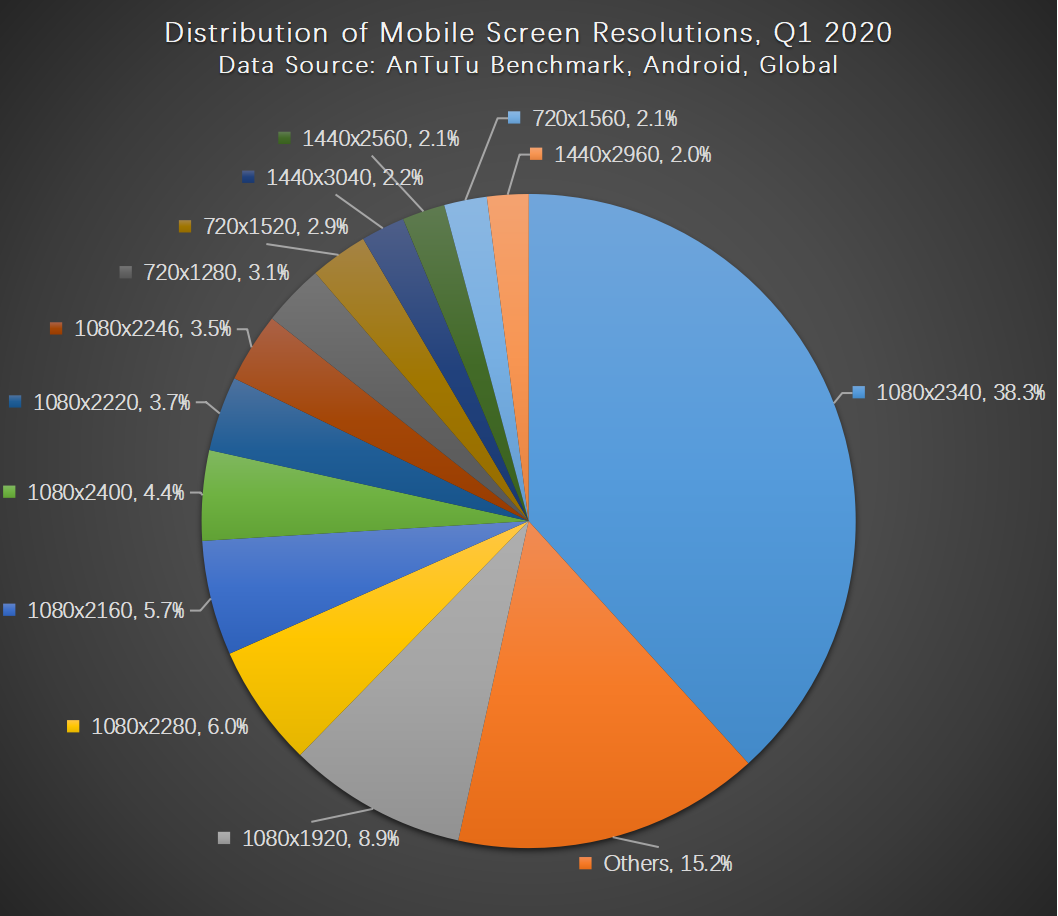
In terms of screen resolution, 1080P isstill the mainstream. From the corresponding distribution chart, 1080x2340accounts for 38.1%, a 0.2% increase compared to Q4, 2019.
Mobile phones with 720P resolution accountedfor only 8.1%. The dwindling stock means this resolution is disappearing from themarket.
The proportion of mobile phones with 1440Presolution began to increase. With the popularity of high refresh rate screen,resolution also needs to be improved. Therefore, the long-stalled 1080Presolution era is about to see a significant progress.
CPU Brand
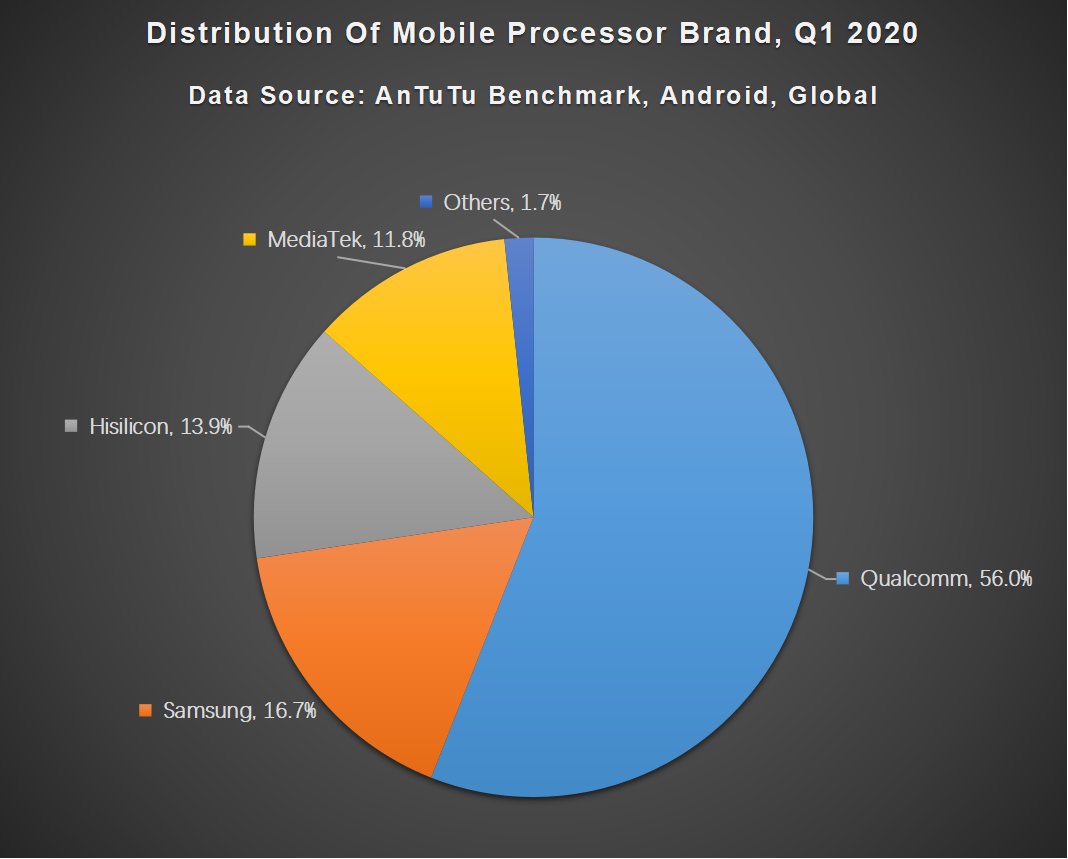
With regard to CPU, the market is stillsplit between Qualcomm, Samsung Exynos, HiSilicon Kirin and MediaTek, withQualcomm leading the way with 56% market share, which is larger than the totalsum of rest three competitors.
However, Qualcomm's CPU share this quarter fellby 3.3 percent compared to the previous quarter. This is probably because theemergence of the 5G market requires more 5G CPUs, which gives its competitors suchas Samsung opportunities to catch up. For example, Samsung’s own Exynos 990 5Gis also a very good flagship CPU.
The CPU share of Samsung and HiSiliconKirin is basically the same compared to last quarter, so the CPU share ofMediaTek has seen largest increase in this quarter, namely, an increase of 2.8%compared to last quarter. However, the fact that MediaTek's own 5G CPU isdelayed in being used in mobile phones is confusing.
Number of CPU Cores
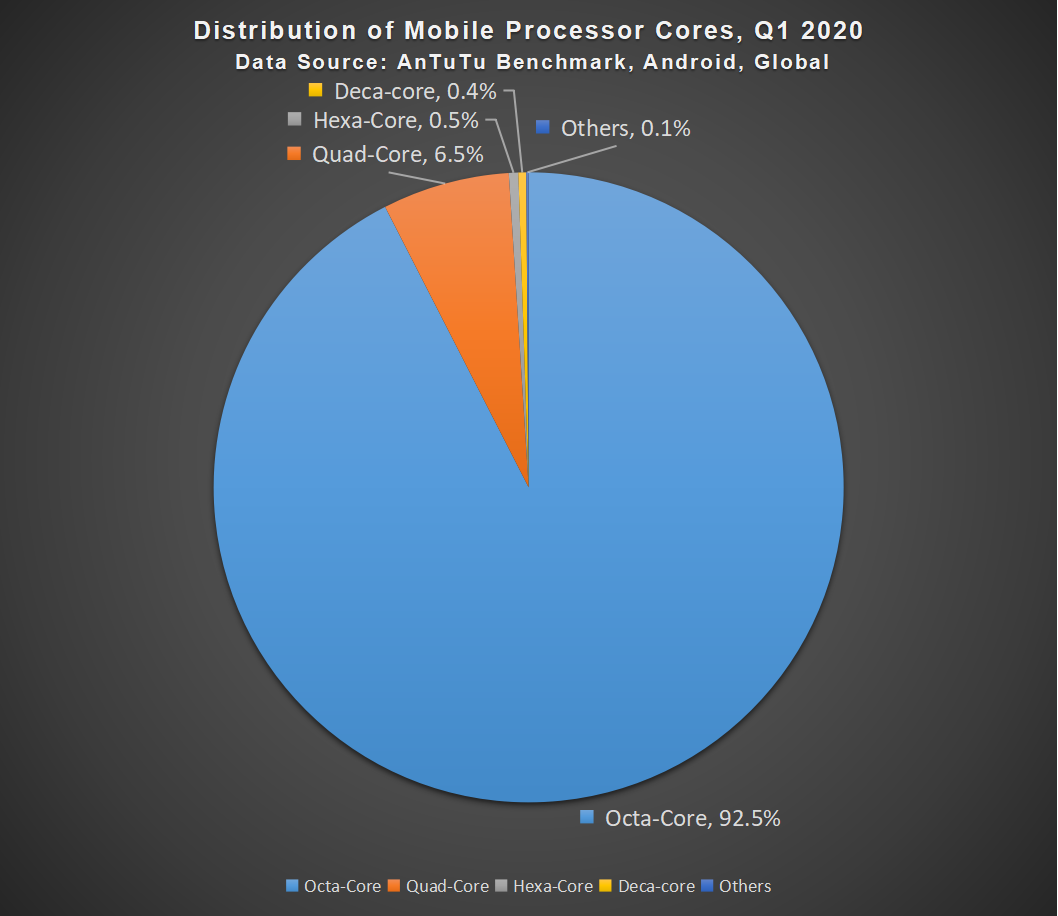
In today's mobile phone market, for a newlyreleased phone, regardless of the phone’s positioning and its branding, it mustbe equipped with an octa-core SoC while quad-core has become a thing of thepast.
According to the statistics of Antutu, inthe first quarter of 2020, smartphones with octa-core SoCs have taken up 92.5%of the market share, which is a clear evidence that with the increasing numberof cameras and high refresh rate screens on phones, octa-core chips have becomea necessity.
Although higher efficiency and moresophisticated manufacturing processes have in fact completely outstripped theperformance required by today's phones, users are still enthusiastic aboutgetting more.
RAM
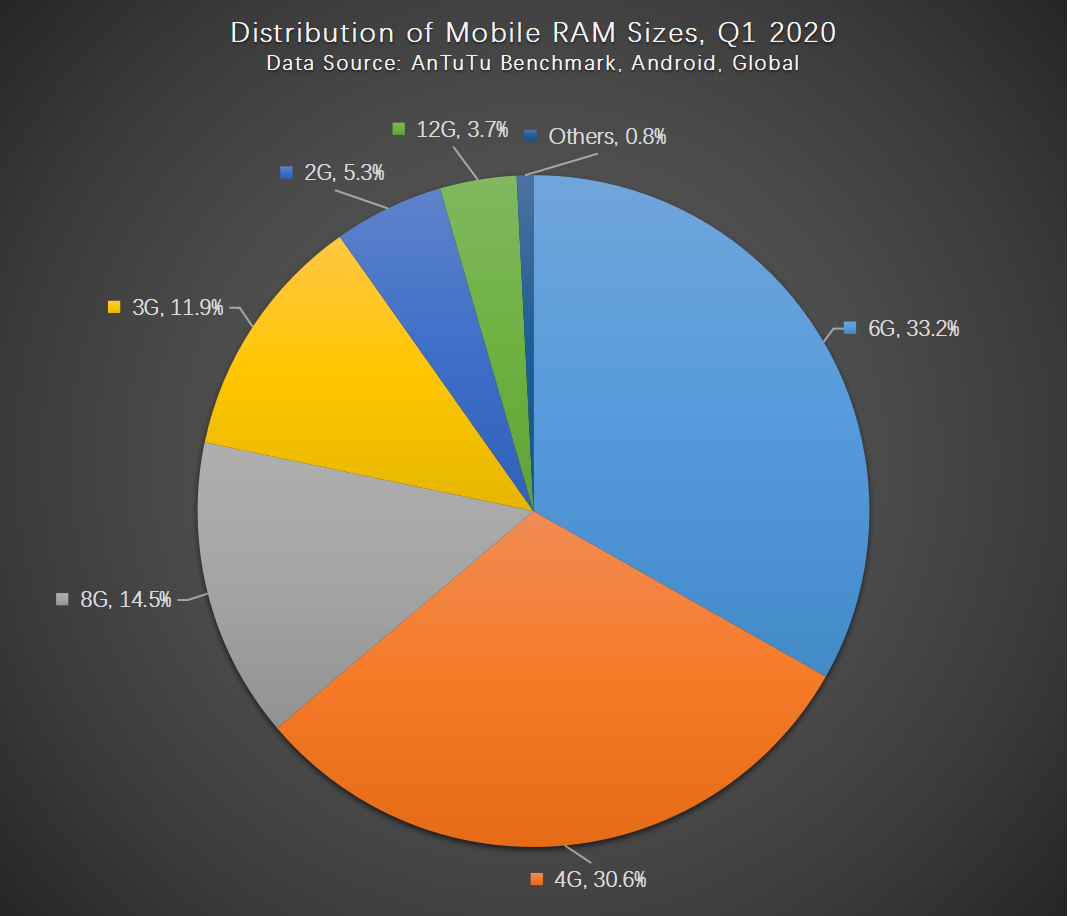
The proportion of 8GB RAM has increased by1.2% from the previous quarter, so it is increasingly likely that 8GB RAM willbecome the standard configuration for Android phones to start with, theproportion of 4GB and 6GB RAM has decreased by 1.7% and 2.2% respectively fromthe previous quarter. Android phones are entering a higher configuration stage,with 4GB RAM and 6GB RAM gradually being phased out.
As for the rest 2GB and 3GB RAM, they canalmost be ignored. However, there is a reason for their existence as long as someold phones are still in use, but it will not be long before they disappear fromthe market completely.
ROM
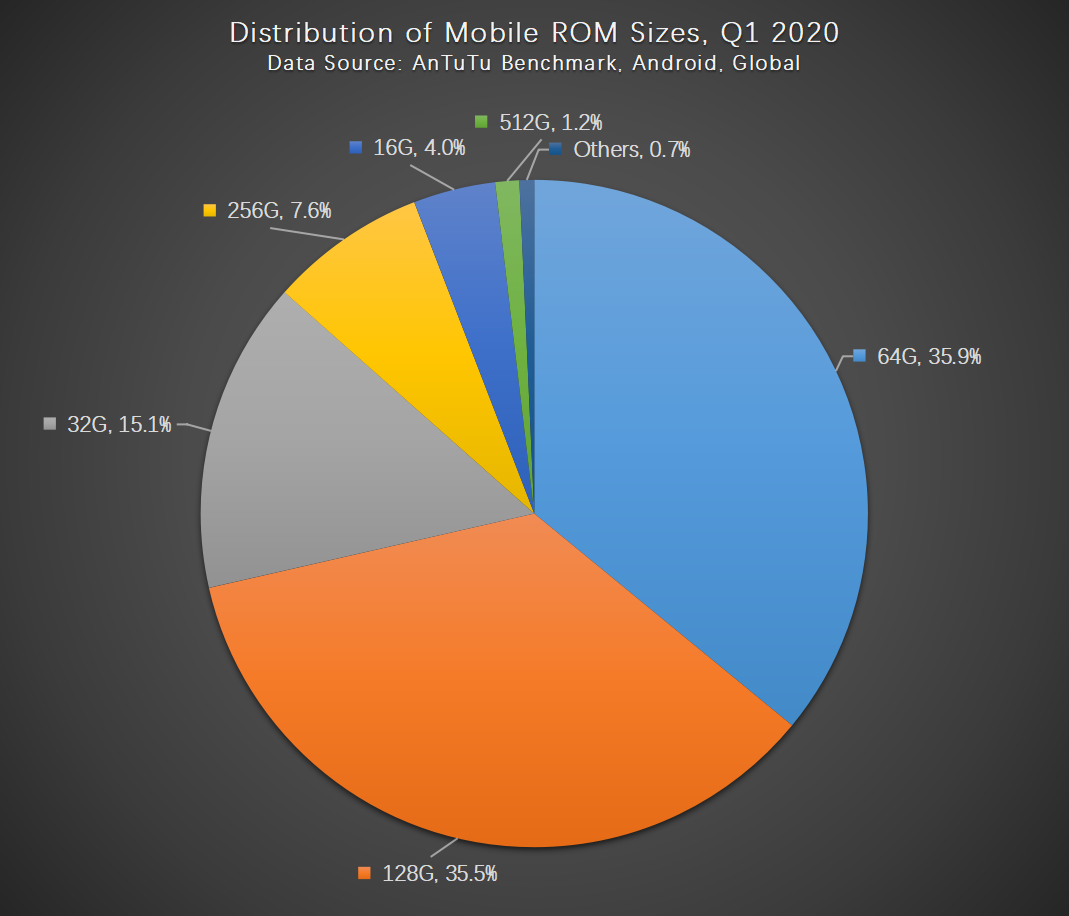
In terms of ROM, the most obvious change isthat the proportion of 64G ROM has decreased by 2.5% compared to lastquarter, which means that 64GB ROM as base-level storage is gradually being phasedout on Android phones, while the proportion of 128GB ROM has increased by 0.4% compared to last quarter.
The proportion of 128GB ROM is 35.5% while64GB ROM has a proportion of 34.9%. The 0.4% difference between them islikely to be flat or even reversed in next quarter's preference list, as 64GB ROM size is doomed to be inadequate based on the pixel size and 8K videorecording support of new phones.
And it's likely that the transition to 128GB ROM will be a bit faster than 64GB ROM.
Android version
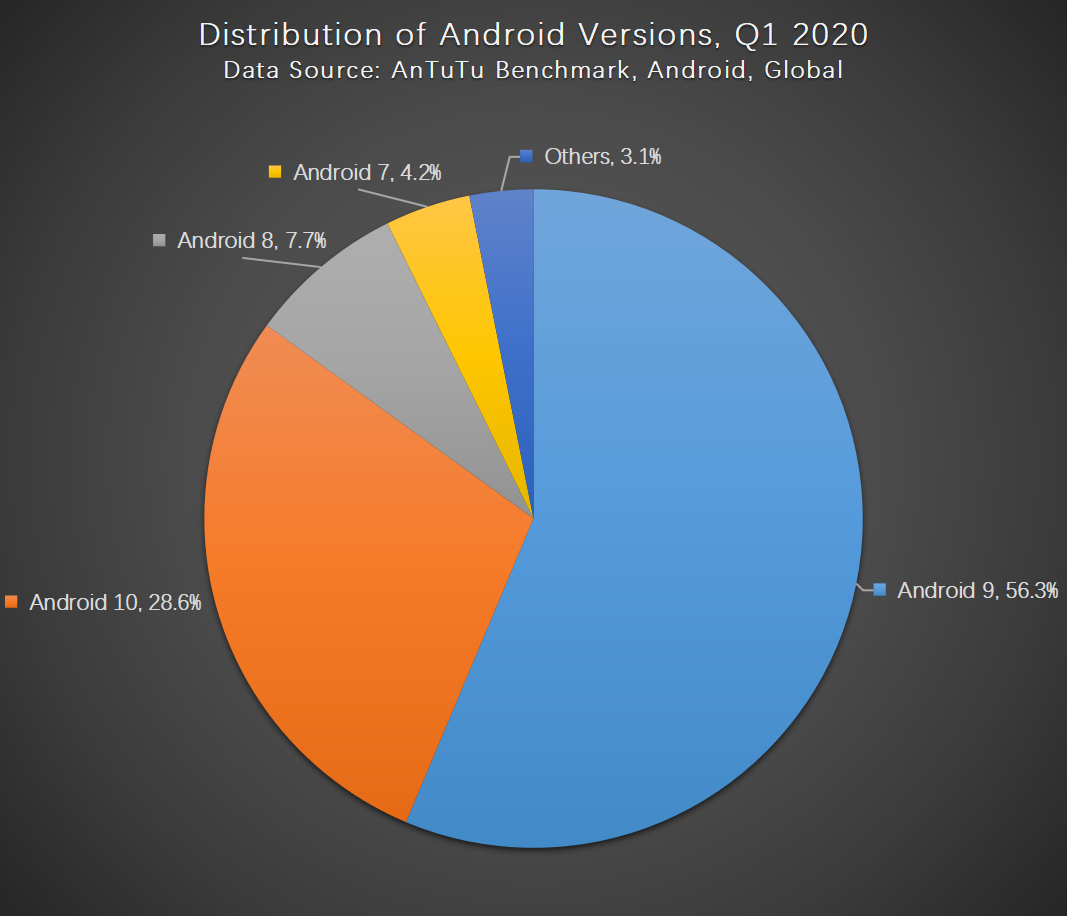
As for Android version, the proportionof Android 9 has dropped significantly to 56.3%, down 17.1%,compared to the previous quarter, while the proportion of Android 10 hasincreased to 28.6%, up 16.7% from 11.9% in the previousquarter, which is almost exactly the same as the reduction of Android 9. Thisshows that more and more Android 9 users have upgraded to the latest Android10, which is really not easy for the always fragmented Android OS market.
The above is the interpretation on thepreferences of Antutu's users in Q1 of 2020. From the figures, we can see that Androidphones have become more and more powerful on the road of upgrading configuration.But overall, the Android market is still relatively fragmented, and it is aproblem difficult to be resolved as it all depends on the manufacturer fromwhom you bought the phone to decide when to upgrade the Android version. However,the good thing is that currently the upgrade of Android version does not havemuch impact on users, so it is not very important.
Finally, it should be noted again that thisonly represents the preferences of Antutu users and does not represent theconfiguration distribution of the overall Android smartphone market.

